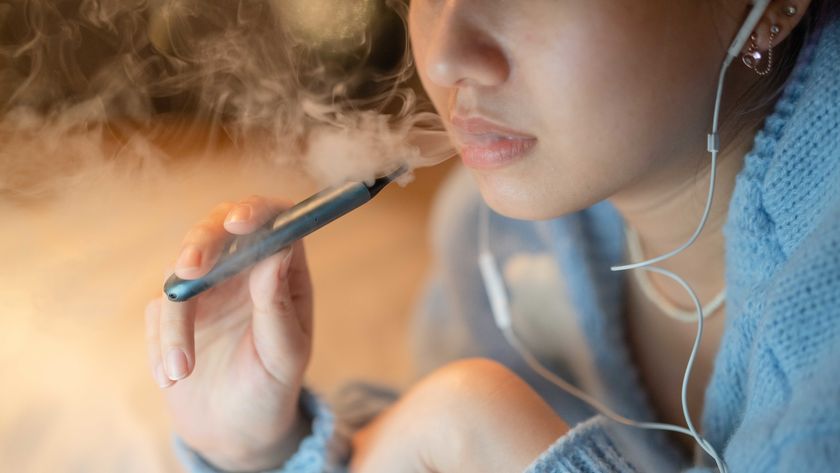CDC: Air Travelers at Risk From Secondhand Smoke

Overenthusiastic Transportation Security Administration pat-downs aren't your only travel worry this holiday season, according to the Centers for Disease Control and Prevention. A new report by the agency finds that one in four of the largest U.S. airports still allows smoking indoors, potentially exposing travelers and workers to disease-causing secondhand smoke.
The findings, published today in the CDC's Morbidity and Mortality Weekly Report, reveal an unnecessary risk, according to CDC director Thomas Friedan. Secondhand smoke has been linked to heart attacks, lung cancer and asthma attacks, among other ailments. [Read: How Bad is Secondhand Smoke?]
"Every year, millions of people who travel through and work at these airports are unnecessarily exposed to secondhand smoke," Friedan said in a statement. "Even ventilated smoking rooms do not eliminate secondhand smoke exposure. Eliminating smoking at airports is the only way to fully eliminate exposure."
According to the report, more airports prohibit smoking today than in 2002, when 42 percent of the 31 largest U.S. airports were smoke-free. Of the 29 largest airports examined in the current study, 76 percent were smoke-free indoors.
But seven of the nation's largest airports still allow indoor smoking in designated areas, the CDC reports. That includes Hartsfield-Jackson Atlanta International Airport, Dallas Fort Worth International Airport, and Denver International Airport, three of the five busiest airports in the country. The other four large airports that allow indoor smoking are: Las Vegas McCarran International Airport, Charlotte Douglas International Airport, Washington Dulles International Airport, and Salt Lake City International Airport.
These airports don't allow people to light up willy-nilly; specially ventilated enclosed areas are set aside for smokers. But CDC officials argue that these rooms don’t do enough to protect passersby and workers. The 2006 Surgeon General's Report concluded that even cleaning the air and ventilating buildings don't eliminate the risk of secondhand smoke exposure by people who pass by, work nearby or clean those rooms.
The report also draws attention to the cloud of smoke hovering outside many airport exits. Travelers and airport employees are at risk of inhaling cigarette smoke near outdoor smoking areas, particularly if the areas are enclosed. The CDC cites a California Air Resources Board study, which found that nicotine concentrations near outdoor smoking sites at airports could as high as those in a smoker's home. None of the 29 airports studied ban smoking on airport property, the CDC found. One-third of the studied airports allow smoking near airport entries and exits.
Sign up for the Live Science daily newsletter now
Get the world’s most fascinating discoveries delivered straight to your inbox.
The CDC recommends a hard line when it comes to public smoking.
"Completely eliminating smoking in all public places and workplaces, including airports, is the only way to fully protect nonsmokers from secondhand smoke exposure," Ursula Bauer, the director of the CDC's National Center for Chronic Disease Prevention and Health Promotion, said in a statement. "Secondhand smoke is responsible for 46,000 heart disease deaths and 3,400 lung cancer deaths each year."

Stephanie Pappas is a contributing writer for Live Science, covering topics ranging from geoscience to archaeology to the human brain and behavior. She was previously a senior writer for Live Science but is now a freelancer based in Denver, Colorado, and regularly contributes to Scientific American and The Monitor, the monthly magazine of the American Psychological Association. Stephanie received a bachelor's degree in psychology from the University of South Carolina and a graduate certificate in science communication from the University of California, Santa Cruz.











